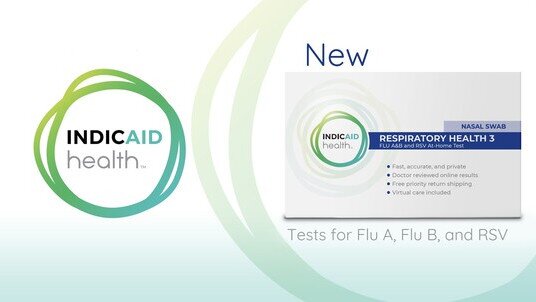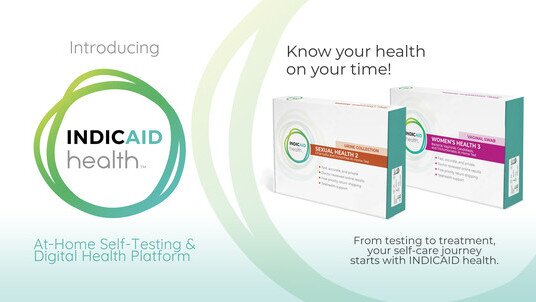Why Employers Should Not Remove Their COVID-19 Testing Polices
Press ReleaseDecember 5, 2022

Reprint from Employee Benefit News by Deanna Cuadra
(ATLANTA, GA) – December 5th, 2022 As hospitals witness a surge of COVID-19, flu and respiratory syncytial virus (RSV) cases this winter, workforces may experience higher rates of absenteeism and health problems. But employers can take steps to mitigate the spread.
Two new #omicron subvariants are becoming dominant in the U.S. just in time for the holidays — and they are seven times more immune-evasive than their predecessor, BA.5. Additionally, healthcare providers are seeing record rates of flu and RSV, with children especially at risk for hospitalization. As of November, the U.S. Department of Health and Human Services reported that 76% of pediatric hospital beds were occupied.
As this winter “tridemic” goes on, employers may see more employees call in sick to care for themselves and loved ones. However, routine COVID testing still remains a vital way to limit the number of cases that hit workforces, says Doug Field, chief revenue officer at Phase Scientific Americas, a firm that provides diagnostic and data tools for healthcare providers.
“I hear people say that they are not testing because a [majority] of their employee population is vaccinated,” says Field. “But the fact of reality is that you can still get COVID if you’re vaccinated, and you can still give COVID to others. So unless you test, you don’t know.”
– Doug Field, Chief Revenue Officer, PHASE Scientific Americas”
While precautions like vaccinations and masking do lower the risk of catching COVID, it’s important to note that as the virus evolves, the more likely it is to outpace the protections offered by vaccines that are currently available. Vaccines can also decrease the severity of COVID symptoms experienced in the initial weeks of testing positive, but they do not effectively stop long COVID and the healthcare costs and absences that come with it. A study published in the peer-reviewed journal Nature Medicine found that vaccines only reduced the risk of getting long COVID by 15%.
As employers opt for hybrid work structures, office parties and even a full return to in-person work, Field advises leaders to establish or reinstate a testing policy. Ideally, an employer would ask workers to test one to two times a week, whether through at-home rapid testing kits or point-of-care tests, where a healthcare professional executes a rapid test themselves and can prescribe treatment if the patient tests positive. Notably, healthcare providers do offer combination tests, using one nasal swab to test for COVID, flu and RSV.
Otherwise known as test-to-treat, workers can also take an at-home test and connect with a provider virtually to receive care if they test positive for COVID or just feel under the weather with a negative result.

“A good group of employees wants to know they’re walking into a safe environment at work,” says Field. “So it should be a positive thing for an employer to provide testing.”
Field underlines that PCR testing is still the gold standard for COVID testing and recommends that employers give workers the time and resources to conveniently access a testing site if they seriously suspect they were infected or tested positive on a rapid. But at-home tests can help employers and employees quickly assess the risk of coming into the office.

“The at-home test is very accurate for what I call surveillance testing,” says Field. “If you do test positive, you’re not going out into your community and can seek care. If you take a PCR test, you have to wait 24 to 48 hours to get those results, and you may go out with family and friends while positive.”
And the Biden administration still requires all healthcare insurers to cover the cost of eight COVID tests per person per month, covering up to $12 per test. This means that whether employers are self-funded or working with an insurance carrier, they can provide free tests to their entire workforce.
And yet, a survey by Phase found that while 81% of employers offer some form of COVID testing, less than half offer employees at-home testing kits and only 19% have implemented test-to-treat solutions. Simultaneously, 67% of employers report a meaningful rise in absenteeism. Field points out that rates of absenteeism will likely grow if employers do not take precautionary measures.
Not to mention, Field worries that due to less nationwide attention on COVID, as well as a reduction in people and states reporting positive cases to the CDC, the U.S. does not have a clear picture of just how much COVID is spreading.
“Frankly, this [COVID] surge may even be worse than last year,” says Field. “It’s important for employers to pay attention to this and protect their employees.”
About the INDICAID COVID-19 Rapid Antigen At-Home and Point of Care Tests:
www.phasescientificamericas.com
The INDICAID COVID-19 Rapid Antigen At-Home Test is authorized for non- prescription home use. INDICAID® is only authorized for the duration of the declaration that circumstances exist justifying the authorization of emergency use of in vitro diagnostic tests for detection and/or diagnosis of COVID-19 under Section 564(b)(1) of the Act, 21 U.S.C. § 360bbb-3(b)(1) unless the authorization is terminated or revoked sooner.
………
For more information, contact :
MIKE MCCLELLAN
Sales & Marketing Manager
Email: mike.mcclellan@phasesci.com




